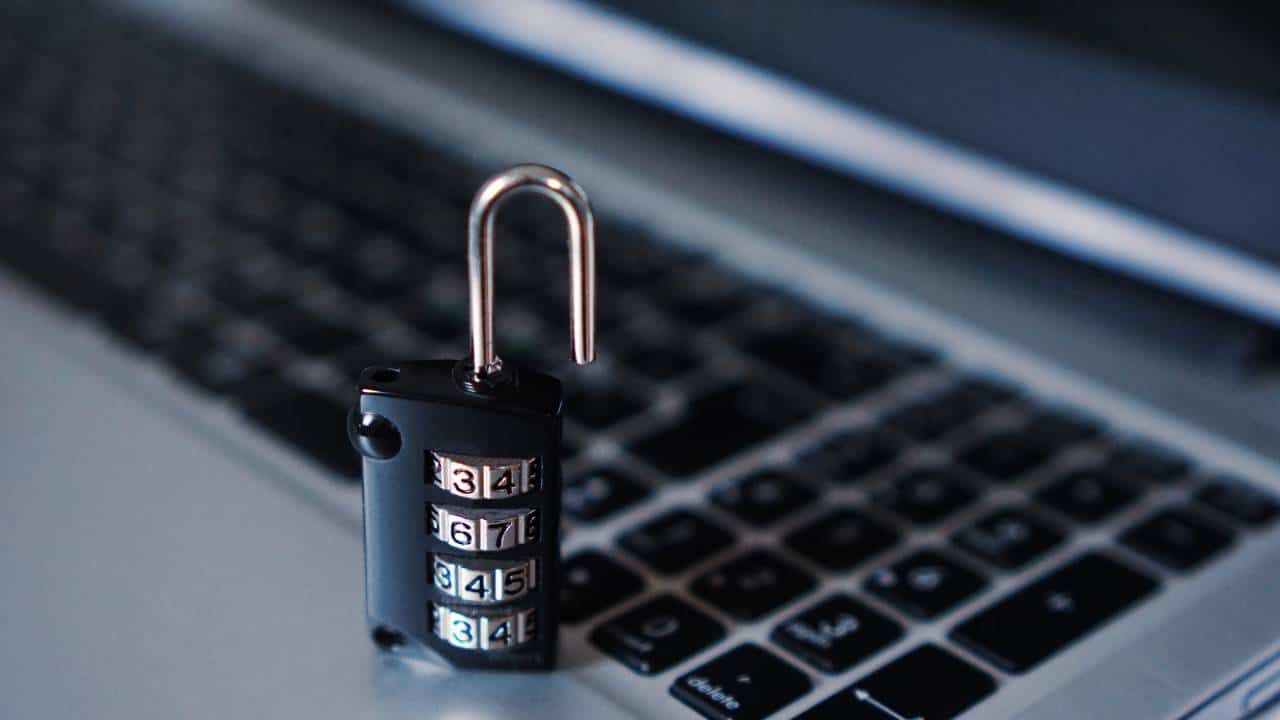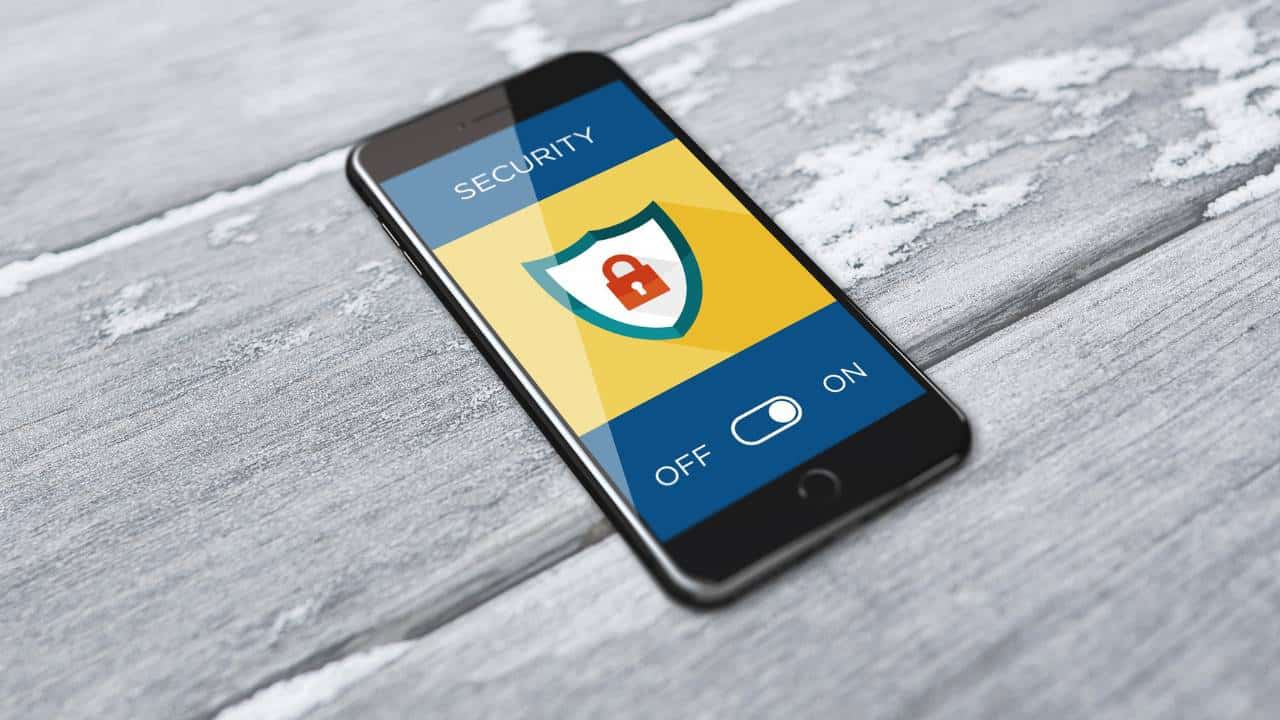In today’s digital landscape, businesses face a growing number of security threats. Cybercriminals are becoming increasingly sophisticated in their methods, targeting not only large corporations but small enterprises as well. Thus, it is essential for businesses of all sizes to develop and implement robust security measures to protect their valuable assets and maintain customer trust.
Understanding Business Security
In today’s digital landscape, businesses face an array of cybersecurity risks and threats. The protection of data, systems, and infrastructure is essential to maintain the trust of clients, stakeholders, and employees. Understanding business security is a vital aspect of mitigating cybersecurity risks and preventing cyberattacks on company assets.
One of the main concerns for businesses is the security of their data. Data breaches can lead to the exposure of sensitive information, financial losses, and damage to a company’s reputation. To protect data from external and internal cyber threats, companies should implement robust cybersecurity strategies that outline security policies and practices specific to their requirements and regulatory environment.
Cybersecurity involves a multi-layered approach to guarding against various types of cyberattacks. Some common cyber threats businesses face include phishing, ransomware, and Distributed Denial of Service (DDoS) attacks. Identifying and understanding these cybersecurity threats helps companies develop more proactive strategies and systems to protect their assets effectively. Moreover, integrating robust cybersecurity measures is rapidly becoming one of the foundational strategies for success in modern business.
In addition to technological solutions, employee training is crucial in ensuring business security. Your workforce should be educated about the potential threat landscape and the role they play in preventing security breaches. Regular training on cybersecurity best practices, such as strong password management and recognising phishing attempts, can significantly reduce the risk of human error leading to a security breach.
Investing in proper cybersecurity infrastructure and tools is also essential in minimising the risk of cyber attacks. Implementing security measures such as firewalls, antivirus software, and intrusion detection systems can help detect and prevent potential cyberattacks on your business.
Business security is more than just safeguarding against cybercrime. Physical security measures, such as securing office spaces, limiting access to sensitive areas, and monitoring facilities through surveillance systems, also play a crucial role in overall business security and the reduction of cybersecurity risks.
The Importance of Cybersecurity for Businesses
In today’s digital era, the importance of cybersecurity for businesses cannot be overstated. Small businesses, in particular, are becoming increasingly targeted by cybercriminals. Implementing cybersecurity best practices is essential to safeguard sensitive information, personal data, and intellectual property.
One of the primary reasons to prioritise cybersecurity is to protect the privacy of customers and employees. Businesses handle significant amounts of sensitive data daily, and it is crucial to maintain the trust of clients and staff by ensuring their personal information is secure from unauthorised access.
In addition to privacy concerns, financial costs can be significant when a business suffers a cyberattack. The costs associated with investigating the issue, mitigating the damage, and adopting new security protocols can be overwhelming, particularly for small businesses with limited resources.
Creating a strong security culture within the organisation is another essential aspect of protecting a business from cyber threats. By fostering a security awareness amongst employees, businesses can empower them to recognise potential risks and respond effectively to safeguard the organisation. Staff awareness is pivotal in preventing data breaches and keeping sensitive information secure.
Moreover, intellectual property (IP) is often a company’s most valuable asset. Protecting IP from cyber threats is crucial to ensure a business maintains its competitive edge and reputation. Cybersecurity plays a vital role in defending a company’s innovations, ideas, and trade secrets from being compromised or stolen by cybercriminals.
Implementing cybersecurity best practices is one of the most effective ways to protect your business from cyber attacks. These practices can include regularly updating software, employing strong passwords, using secure networks, and offering employee training on cybersecurity awareness.
Establishing Robust Security Policies
Establishing robust security policies is crucial for any business in order to protect its valuable assets and maintain client trust. A comprehensive security policy serves as the first line of defence against cybersecurity risks, encompassing both technical and procedural aspects. It lays out the guidelines, rules, and procedures that employees must follow to ensure the safety and integrity of a business’s information systems.
The effective implementation of a policy-first approach starts with understanding the regulatory and compliance requirements that the business must adhere to. Once these requirements have been identified and incorporated into the policy, businesses need to create a detailed plan outlining the specific security measures that will be implemented.
In addition to policies, it is essential to establish clear procedures for dealing with potential security incidents. These procedures should detail the actions that employees must take in the event of a security breach, such as reporting the incident, preserving evidence, and identifying the responsible parties. Regularly reviewing and updating these procedures ensures that they remain effective in the face of evolving threats.
Another important aspect of robust security policies is ensuring that all stakeholders are accountable for their actions. This includes assigning responsibilities to specific individuals or teams, and creating a system of checks and balances to prevent abuse of power or negligence. Proper documentation and record-keeping make it easier to track accountability, helping to pinpoint any potential weaknesses in the system and take corrective action when necessary.
To ensure the widespread adoption and adherence to these security policies, businesses should invest in security awareness training for all employees. This can take the form of regular seminars, workshops, or even immersive learning experiences like simulated phishing attacks. By making security part of the company culture, employees are more likely to take the necessary precautions and implement the established policies and procedures.
Potential Threats to Business Security
Businesses face an ever-evolving array of potential security threats. From phishing scams to malware infections, the digital landscape requires vigilance and awareness to protect sensitive data and assets.
Phishing scams are a prevalent threat to organisations, as they exploit human error and deception. Cybercriminals employ social engineering techniques in phishing emails, luring employees into clicking on malicious links or providing sensitive information. As a result, businesses can be exposed to significant risks, including data breaches and financial loss.
Social engineering is an umbrella term for a variety of tactics used by cybercriminals to manipulate individuals into divulging confidential information. These tactics often employ human psychology and appeal to trust, authority or curiosity, making them a highly effective means of compromising business security.
Suspicious activity can manifest in multiple ways, including unusual system behaviour, unauthorised access attempts, and potential data breaches. Promptly identifying and responding to suspicious activity is crucial for businesses to mitigate potential security incidents.
Fraud is another potential threat to organisations, as cybercriminals may use various deceptive tactics to commit financial crimes or steal valuable information. Implementing strong cybersecurity measures is essential to prevent fraud and protect the organisation’s reputation and finances.
Adhering to cybersecurity tips and best practices can significantly reduce the risk of falling victim to these threats. Regular employee training on security awareness, strong password policies, and reliable system backups are just a few of the recommended strategies.
Viruses and spyware pose a significant risk to businesses, as they can infiltrate systems, compromise data integrity, and cause widespread disruption. Antivirus software and robust firewalls are crucial for thwarting both known and emerging malware threats, safeguarding the organisation’s digital environment.
Data Protection and Privacy
Data protection and privacy are crucial aspects of business security. Ensuring the safety of personal data and sensitive information is not only a matter of trust and compliance, but also a key component in preventing data breaches and protecting intellectual property.
One of the primary steps in data protection is implementing a comprehensive data loss prevention (DLP) strategy. This includes physical security, cloud security, and guarding against insider threats. Organisations should also establish a clear set of policies and best practices for data management to minimise the risk of unauthorised access or misuse.
Effective data privacy measures encompass transparent communication with customers and stakeholders. By clearly explaining how data is being used and the benefits they receive, organisations can build trust and maintain compliance with pertinent regulations. Regular audits and classification of data help ensure that the right levels of access, retention, and replication are in place.
When it comes to handling personal data, the principle of minimisation is crucial. This involves not collecting unnecessary data and deleting it as soon as the need for it has passed. By adhering to this principle, businesses can reduce the risk of accidental data exposure and limit their liability in the event of a breach.
To safeguard sensitive information and intellectual property, organisations should invest in robust access controls and encryption technologies. Keeping data encrypted both at rest and in transit can help mitigate the damage resulting from leaks or unauthorised access.
Continuous monitoring and threat detection are instrumental in maintaining secure data environments. By proactively identifying potential weaknesses or breaches, companies can swiftly respond to threats and prevent further damage.
Email and Internet Security
In today’s world of advanced cyber threats, it is crucial for businesses to implement strong email and internet security measures. This includes regularly updating their anti-spam, phishing protection, and firewall systems to keep the organisation’s data secure.
One fundamental aspect of email security is creating and enforcing a corporate email policy. This often entails establishing guidelines on password security, email usage, data protection measures, and ensuring all employees adhere to these rules. It is also essential to educate staff to recognise and report potential phishing scams that may arrive in their inboxes.
Phishing emails are one of the most common attack vectors used by cybercriminals. To protect against these threats, businesses should invest in email security tools that can identify and filter out these malicious messages. Implementing multi factor authentication (MFA) is an additional layer of defence that can significantly reduce the risk of account breaches.
Employee training is paramount in maintaining a secure internet environment. Regularly conducting cybersecurity awareness sessions and providing a comprehensive guide on best practices can help to reduce the likelihood of successful phishing attacks. This includes teaching employees to be cautious when clicking on email attachments or links, as well as maintaining a clear distinction between business and personal email use.
On the internet security front, companies should deploy robust firewalls, intrusion detection systems, and regularly update their antivirus software. Keeping programs and operating systems up-to-date with the latest patches can mitigate potential vulnerabilities. Additionally, it’s wise to implement network segmentation and access controls, which further limits an attacker’s ability to compromise sensitive data.
Device and Endpoint Security
In today’s digital landscape, businesses must prioritise device and endpoint security to protect sensitive information from ever-evolving threats. It is crucial to implement best practices to effectively safeguard corporate data and network access.
One fundamental aspect of device and endpoint security is the use of virtual private networks (VPNs). A VPN helps maintain privacy while connecting to the internet, encrypting data and concealing the user’s location. Employing a VPN is integral for businesses, as it protects critical data by ensuring all devices utilise an approved operating system.
Requiring employees to connect to business resources through a VPN can reduce the likelihood of a data breach or unauthorised access. This protection is vital, especially with the increase in remote work and BYOD (Bring Your Own Device) policies.
In addition to VPNs, businesses should implement an endpoint security management system to monitor and manage all devices connected to their network. This system should consist of regular updates, strong authentication measures, and robust endpoint protection software.
Addressing physical theft is also critical to achieving thorough device security. Adequate measures such as device encryption, remote wiping capabilities, and enabling device tracking help mitigate the risks associated with lost or stolen devices. Companies should also provide guidelines for employees to safely store and handle their devices, minimising the chance of physical theft.
The Role of Employees in Business Security
Employees play a crucial role in maintaining business security. They are often considered both the first line of defence and the weakest link in an organisation’s security system. As such, it is vital for businesses to establish robust security training programmes, educate employees on potential risks, and instil a culture of responsibility when it comes to cybersecurity.
One of the key aspects of ensuring employee involvement in business security is developing comprehensive security training programmes. These should include guidelines on password management, phishing awareness, and reporting security incidents. As businesses adapt to new digital marketing trends, it’s becoming more critical for employees to understand how data protection intersects with these evolving strategies. By providing employees with the necessary tools and information, they become better equipped to recognise and respond to threats in a timely manner.
In addition to adequate training, implementing a strong security policy is essential. This policy should outline the responsibilities of each individual within the organisation and clearly define the actions employees must take to adhere to the prescribed security measures. The policy should be reviewed and updated regularly to ensure it remains relevant and effective in an ever-changing threat landscape.
Another important element of employee involvement in business security is fostering an environment of honest communication. Employees must feel comfortable reporting potential vulnerabilities, breaches, and incidents without fear of repercussions. To establish such an environment, management should provide clear communication channels for reporting security concerns and ensure that all reports are investigated thoroughly and promptly.
Promoting a culture of security awareness and responsibility starts at the top. Management must lead by example, demonstrating adherence to security policies and procedures while also actively promoting cybersecurity initiatives within the organisation. By showing commitment, managers can encourage employees to take security seriously and create a culture of vigilance and preparedness.
In summary, the role of employees in business security is crucial to an organisation’s overall protection. Companies must invest in comprehensive security training, develop and enforce strong security policies, and maintain open lines of communication to ensure the team is prepared to address potential threats. By investing in employee education and support, businesses can bolster their security efforts and minimise the risks associated with cyber attacks.
Strong Passwords and Multi-Factor Authentication
In today’s digital landscape, securing business accounts and data is crucial. One effective way to enhance security is by implementing strong passwords and multi-factor authentication (MFA). By adopting these practices, organisations can significantly reduce the risk of account breaches and data theft.
Strong passwords are essential for business security. Passwords should be unique, complex, and challenging to guess. To create such passwords, avoid using easily identifiable information, such as names or dates. Instead, consider using a mix of uppercase and lowercase letters, numbers, and special characters. Additionally, password phrases can be an excellent option for creating memorable yet secure passwords. Businesses should encourage their employees to regularly update passwords and avoid reusing them across multiple accounts. A password manager can be highly beneficial in tracking and managing these complex passwords.
Multi-factor authentication adds an extra layer of security during the login process. It requires users to provide two or more pieces of evidence, such as a password and a unique code sent to their mobile device, to verify their identity. Best MFA practices include choosing a reliable MFA vendor, focusing on ease of use, educating users on multi-factor authentication, and leveraging adaptive MFA solutions.
Another essential factor is using a variety of authentication methods, such as biometrics or hardware tokens, to access different types of accounts. By combining MFA with single sign-on (SSO), organisations can offer a seamless and secure user experience for their employees. To ensure the MFA solution remains effective, businesses should also periodically re-evaluate its performance and make the necessary updates.
Incorporating Antiviruses and Anti-Malware
In a business environment, protecting sensitive information and critical infrastructure is a top priority. One key aspect of this protection is the implementation of antimalware and antivirus software solutions. These tools work together to detect and prevent malicious software, ensuring the security and integrity of business data and systems.
Before deploying these solutions, it is essential to select the right antivirus and antimalware tools for your organisation. Consider factors such as ease of use, integration with existing systems, and the ability to scale with business growth. A combination of enterprise antivirus and antimalware tools can provide robust protection against a range of threats.
Regularly updating your antivirus and antimalware software is crucial in maintaining effective protection from evolving threats. Schedule automatic updates and virus definition database downloads to keep the systems up to date. Ensure that your IT team is knowledgeable and up to speed on malware protection best practices to optimise the tools deployed in your environment.
Network and device monitoring should also be implemented to detect and respond to any potential threats. Monitoring solutions can identify suspicious activities and provide alerts allowing your IT team to act swiftly to minimise the impact of a possible breach.
Training employees in cybersecurity awareness is a vital component of a successful security strategy. Educate employees about the warning signs of phishing attacks and the importance of adhering to antivirus policies. Conduct regular training sessions to inform and update staff members on safe practices and response plans in case of a potential malware or ransomware attack.
To further enhance your organisation’s security, consider implementing additional layers of protection, such as firewalls, intrusion detection systems (IDS), and intrusion prevention systems (IPS). These additional security measures can complement antivirus and antimalware tools, providing a comprehensive approach to defending your business from cyber threats.
By adopting these security best practices and integrating effective antivirus and antimalware solutions, your business can reduce the risk of experiencing a potentially devastating security breach. Proactively maintaining and updating these solutions will help to safeguard your data and ensure the smooth operation of your organisation.
Utilising Cloud Computing for Business Security
Using cloud computing, businesses can bolster their security measures and protect sensitive information. When transitioning to cloud computing or looking to improve the current strategy, incorporating cloud security best practices is essential.
One of the core aspects of cloud security is understanding the Shared Responsibility Model. This model highlights the need for both the cloud service provider and client to play an active role in securing their environment. Firms should work together with their cloud providers to ensure a smooth implementation while maintaining a proper security posture.
Next, it’s crucial to secure the perimeter. Businesses should adopt strong firewalls, intrusion detection systems, and encryption tools to safeguard their data. In addition, monitoring for misconfigurations and promptly rectifying them can help prevent unintentional exposure of sensitive information.
Implementing robust Identity & Access Management (IAM) policies is another crucial step. By controlling who has access to resources and applications, companies can ensure that only authorised personnel can access, modify, or delete data.
To maintain clarity and compliance, businesses must enable security posture visibility. This entails the constant monitoring of security measures and adapting to new risks. Developing and enforcing cloud security policies can help maintain the desired level of protection.
Securing containers is also essential, especially for businesses who explore new technologies and software deployment strategies. By keeping containers securely managed, vulnerabilities can be minimised. Performing regular vulnerability assessments and remediation can also help to identify and rectify gaps in security measures.
Finally, maintaining access control and data deletion measures is crucial. By closely monitoring data access and ensuring secure data disposal when required, businesses can take significant steps towards mitigating risk in their cloud environments. Focusing on these best practices will enable businesses to reap the benefits of cloud computing while maintaining a high level of security.
Conclusion
In the dynamic landscape of modern business, security stands as a paramount pillar, supporting not just operational continuity but also instilling trust among stakeholders. From the rudimentary understanding of business security to harnessing the strengths of cloud computing, it’s evident that the mesh of protective measures is comprehensive and multifaceted.
Remember, while technology offers incredible tools to safeguard a business, the human element – our employees – remains crucial. Every stakeholder, from the intern to the CEO, plays a role in maintaining this shield. It’s not just about erecting walls and barriers; it’s about fostering a culture of vigilance and responsibility.
As businesses continue to weave through the intricate web of the digital world, adopting these best practices ensures not only survival but also a thriving presence in an era where security and business success go hand in hand.




